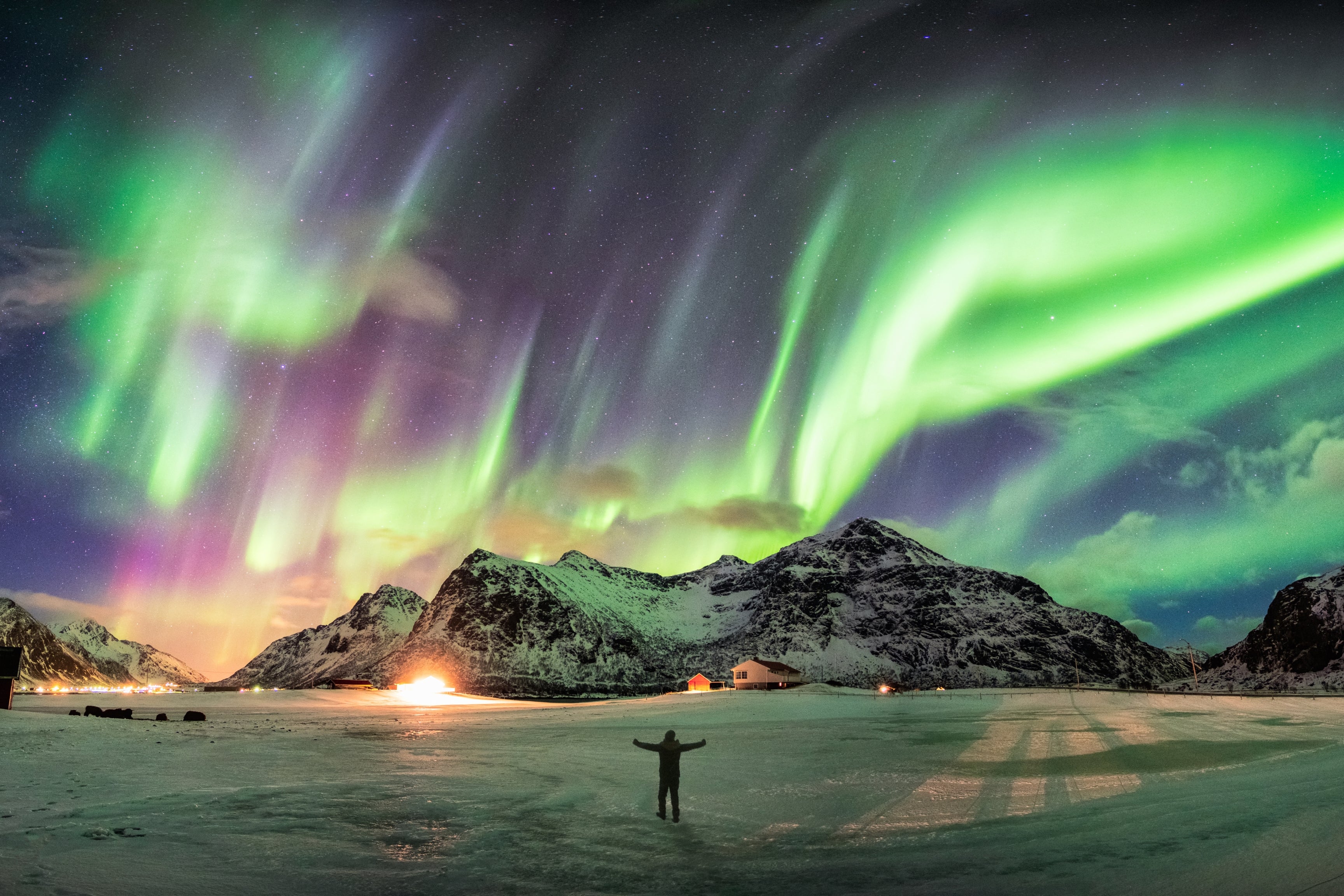Chasing the Northern Lights: Best Destinations and Times
The Northern Lights, or Aurora Borealis, are one of nature’s most mesmerizing phenomena. This celestial display of dancing lights is a must-see for any avid traveler or nature enthusiast. To witness this magical spectacle, one must know the best destinations and times.
This guide explores the top locations around the world and the optimal periods for experiencing the Northern Lights.
Understanding the Northern Lights
The Science Behind the Phenomenon
The Northern Lights are caused by the interaction of solar wind—a stream of charged particles released from the sun—with the Earth's magnetosphere.
When these particles collide with gases like oxygen and nitrogen in the Earth’s atmosphere, they produce the vibrant colors of the Aurora Borealis.
The colors can range from green and yellow to pink and violet, depending on the type of gas involved in the collisions.
Best Viewing Conditions
To maximize your chances of seeing the Northern Lights, it is essential to find a location with minimal light pollution, clear skies, and a high geomagnetic latitude. The optimal conditions typically occur during the winter months when nights are longest, and skies are darkest.
Top Destinations for Viewing the Northern Lights
Tromsø, Norway
Tromsø, located in the heart of the Arctic Circle, is often referred to as the gateway to the Northern Lights.
This Norwegian city offers excellent viewing conditions due to its high latitude and low levels of light pollution.
Additionally, Tromsø provides a range of activities such as dog sledding, whale watching, and reindeer safaris, making it a perfect destination for a winter adventure.
Reykjavik, Iceland
Iceland's capital, Reykjavik, is another prime location for witnessing the Northern Lights. The city’s proximity to the Arctic Circle ensures frequent displays of the aurora.
For the best experience, venture outside the city to places like Thingvellir National Park or the Snaefellsnes Peninsula, where light pollution is minimal.
Iceland also offers stunning landscapes, geothermal hot springs, and volcanic craters to explore during the day.
Fairbanks, Alaska, USA
Fairbanks is one of the best places in the United States to view the Northern Lights. Located just 200 miles south of the Arctic Circle, Fairbanks offers frequent and vivid displays of the aurora. The city’s clear, dark skies and cold temperatures create ideal viewing conditions.
Visitors can also enjoy other winter activities such as snowmobiling, ice fishing, and visiting the famous Chena Hot Springs.
Abisko, Sweden
Abisko National Park in Sweden is renowned for its “Blue Hole,” a patch of sky that remains clear regardless of surrounding weather conditions. This unique feature makes Abisko one of the most reliable places to see the Northern Lights. The park is also home to the Aurora Sky Station, which offers guided tours and an observation deck for optimal viewing.
Yellowknife, Canada
Yellowknife, located in Canada’s Northwest Territories, is considered the Northern Lights capital of North America. The city’s remote location and clear, dark skies provide excellent viewing conditions. Yellowknife’s Aurora Village offers a range of services, including heated viewing areas, guided tours, and indigenous cultural experiences.
Optimal Times for Viewing the Northern Lights
Seasonal Considerations
The best time to view the Northern Lights is during the winter months, from late September to early April. During this period, the nights are longest, and the skies are darkest, providing optimal conditions for observing the aurora. The peak months are December through February, when the nights are at their longest and darkest.
Solar Activity Cycles
The intensity and frequency of the Northern Lights are influenced by the solar cycle, an approximately 11-year cycle that affects solar activity. The peak of this cycle, known as the solar maximum, is characterized by increased sunspot activity and more frequent auroras. The next expected solar maximum is in 2025, making the years leading up to and following this period particularly promising for aurora viewing.
Time of Night
The Northern Lights are most active during the late evening and early morning hours, typically between 10 PM and 2 AM. However, the aurora can appear at any time during the night, so it’s essential to be patient and prepared for a late-night adventure.
Tips for a Successful Northern Lights Trip
Planning and Preparation
- Check the Weather: Clear skies are essential for viewing the Northern Lights. Check the weather forecast and plan your trip for nights with minimal cloud cover.
- Monitor Aurora Forecasts: Websites and apps like the Geophysical Institute’s aurora forecast provide real-time updates on aurora activity, helping you plan the best times to go out.
- Dress Warmly: Winter nights in aurora-viewing locations can be extremely cold. Dress in layers, including a warm hat, gloves, and thermal clothing.
- Bring the Right Equipment: A good camera with manual settings and a tripod is essential for capturing the Northern Lights. Bring extra batteries, as cold weather can drain them quickly.
Local Experiences and Activities
- Guided Tours: Consider booking a guided Northern Lights tour. Local guides have extensive knowledge of the best viewing spots and can enhance your experience with cultural and historical insights.
- Daytime Activities: Explore other activities during the day, such as visiting ice hotels, taking part in traditional Sami experiences, or exploring local wildlife.
Conclusion
Chasing the Northern Lights is a magical and unforgettable experience. With the right planning and knowledge of the best destinations and times, you can increase your chances of witnessing this breathtaking natural phenomenon. Whether you choose the Arctic landscapes of Norway, the geothermal wonders of Iceland, the wilderness of Alaska, the clear skies of Sweden, or the remote beauty of Canada, each destination offers a unique and rewarding aurora-viewing adventure.
References
- NASA Solar Cycle Prediction
- National Geographic - Northern Lights
- EarthSky - Best Time to See Northern Lights





































